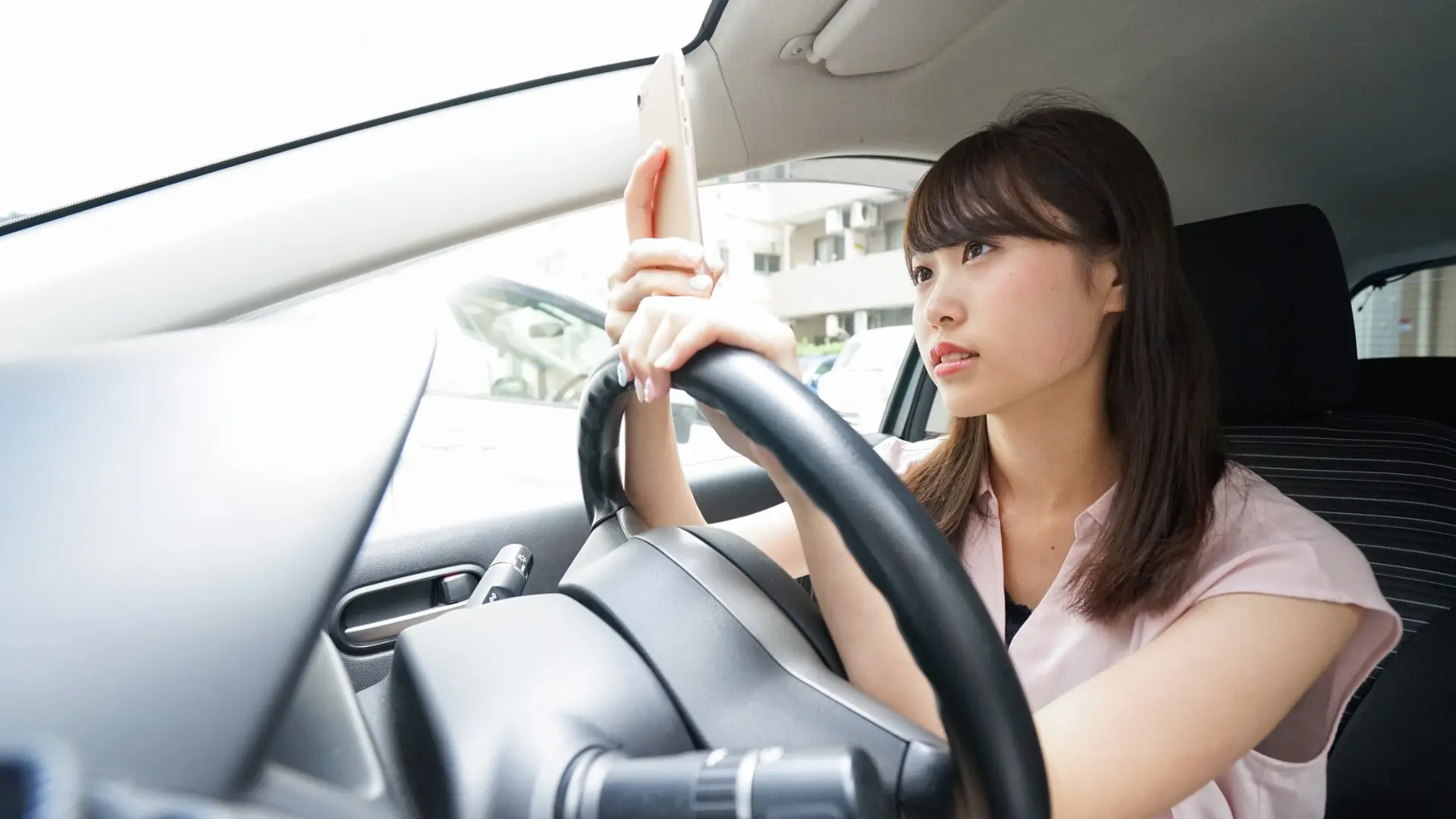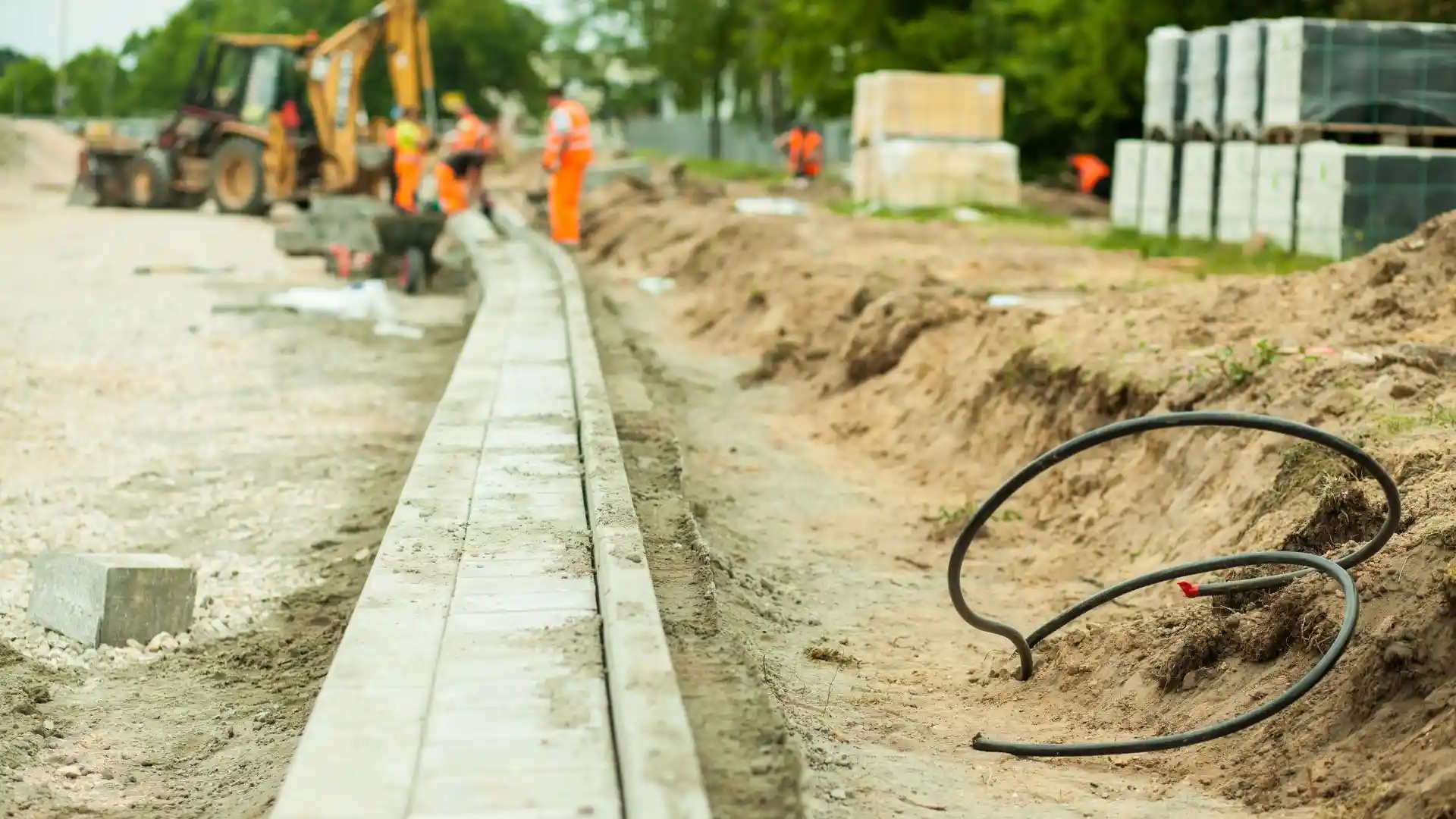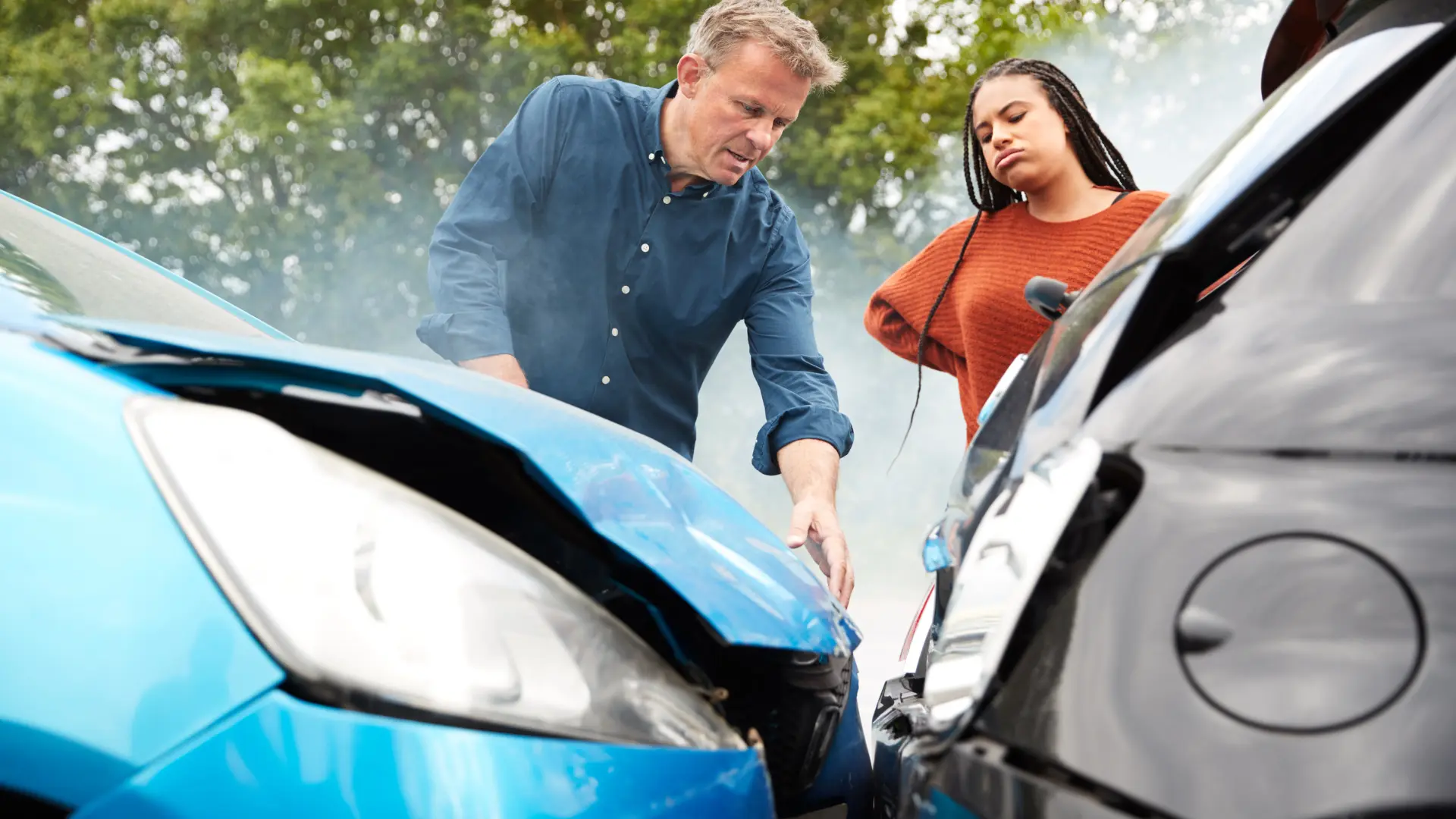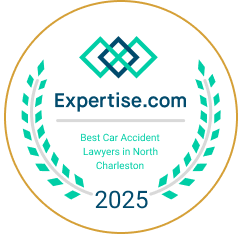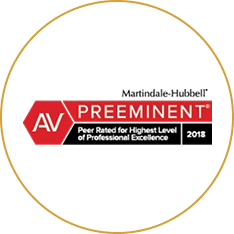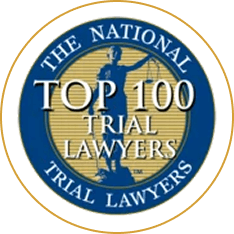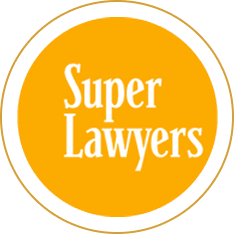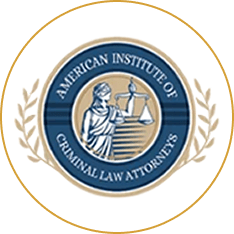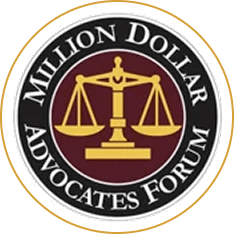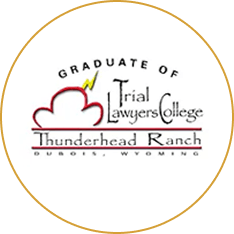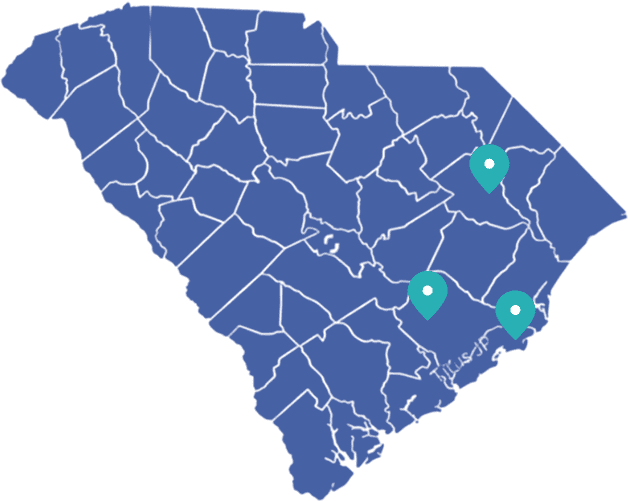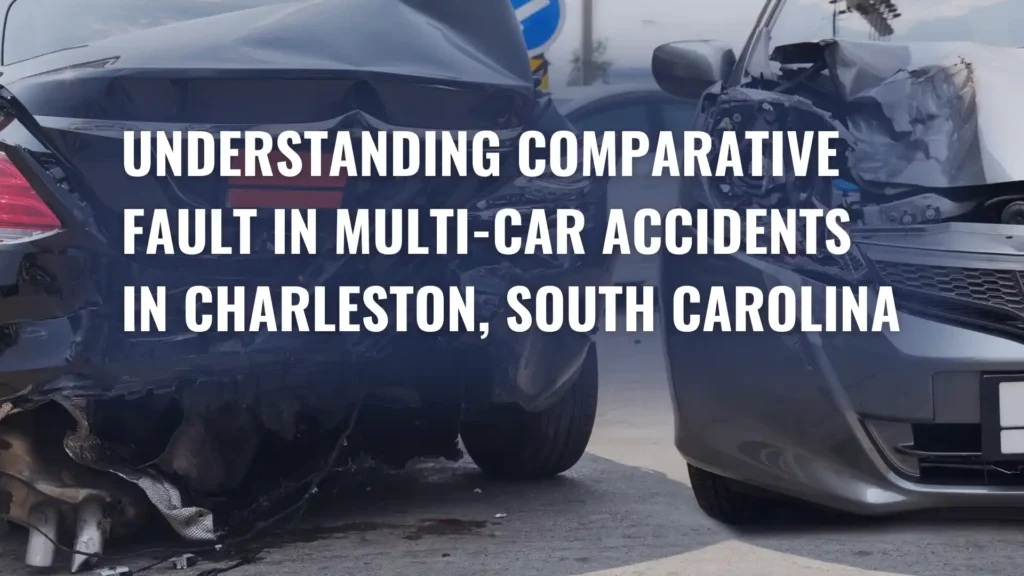
Multi-car accidents present unique challenges when determining fault and pursuing compensation in South Carolina. When three or more vehicles collide, establishing liability becomes complex, especially under South Carolina’s modified comparative fault system. Understanding how comparative fault applies to multi-vehicle crashes can significantly affect your ability to recover damages after an accident in Charleston.
At Crantford Meehan, our experienced Charleston car accident attorneys have handled numerous multi-car accident cases, including a $2.35 million settlement for a family injured in a tractor-trailer rear-end collision on I-26 and a $1 million settlement for a passenger injured in a DUI crash in Florence. Our Trial Lawyers College-trained attorneys understand the challenges of comparative fault in multi-vehicle collisions and work diligently to protect our clients’ rights.
What Is Comparative Fault in South Carolina Personal Injury Law?
Comparative fault—sometimes called comparative negligence—is a legal doctrine that assigns a percentage of responsibility to each party involved in an accident. In South Carolina, courts recognize that several drivers can contribute to the same crash and adjust compensation according to each driver’s degree of fault.
Under this system, injured victims can still recover compensation even if they share part of the blame. For example, a driver who is 30 percent responsible can still recover 70 percent of their proven damages. This differs from contributory negligence, which would bar any recovery for a partially at-fault plaintiff.
South Carolina’s modified comparative fault approach allows for a fairer distribution of damages—especially important in complex multi-vehicle crashes.
How Multi-Car Accidents Complicate Fault Determination in Charleston
Charleston’s high-traffic corridors—I-26, I-526, and major surface streets—often see chain-reaction collisions involving several vehicles and impact points. Multi-car crashes are complicated because:
- Multiple Impact Points: The first collision may trigger additional impacts involving other drivers who had little or no chance to avoid the wreck.
- Different Negligent Acts: One driver may be speeding, another following too closely, and another distracted. Each action contributes differently.
- Chain-Reaction Dynamics: Determining whether later impacts were avoidable requires analyzing speeds, braking distances, and reaction times.
- Insurance Overlap: Multiple insurance companies become involved, each seeking to minimize their insured’s fault.
Our attorneys at Crantford Meehan work with professional accident-reconstruction experts and review every piece of evidence—traffic-camera footage, police reports, and witness statements—to build strong cases for our clients.
South Carolina’s Modified Comparative Fault Rule Explained
South Carolina follows a modified comparative negligence system codified in S.C. Code § 15-38-15.
The 51 Percent Rule and Your Right to Recovery
A plaintiff can recover damages only if their fault does not exceed 50 percent. If they are 51 percent or more at fault, they cannot recover from other parties.
- Threshold for Recovery: A driver 30 percent at fault can still collect 70 percent of their damages.
- Strategic Implications: Insurance companies often attempt to push claimants’ fault percentages above 50 percent to avoid paying.
- Damage Reduction: Awards are reduced by the plaintiff’s percentage of fault—for example, a $100,000 award becomes $70,000 if the plaintiff is 30 percent at fault.
Example of Fault Allocation
In a three-car crash where Driver A = 60% fault, Driver B = 25%, and Driver C = 15%, Drivers B and C can recover from Driver A, but Driver A cannot recover from either of them.
Common Scenarios in Charleston Multi-Car Accidents
Chain-Reaction Collisions on I-26 and I-526
Interstate traffic near Charleston frequently experiences multi-vehicle rear-end crashes, especially in heavy congestion or rain. The first striking vehicle typically bears the greatest share of fault, but contributing factors such as tailgating, unsafe lane changes, or poor weather visibility can shift percentages.
Case Example: In a verified Crantford Meehan case, a tractor-trailer rear-ended a family’s vehicle on I-26 during rainy conditions. Through investigation and analysis, our firm proved negligent braking behavior and secured a $2.35 million settlement.
Surface Street Intersections
Busy intersections such as Dorchester Road, Rivers Avenue, and King Street see multi-car collisions caused by:
- Red-light violations
- Failure to yield
- Unsafe left turns
- Pedestrian or bicycle involvement
These accidents often require interpreting multiple traffic laws and right-of-way rules simultaneously. Understanding South Carolina traffic laws is crucial for establishing liability.
Determining Fault Percentages in Complex Crashes
Determining fault in a multi-vehicle collision relies on comprehensive evidence:
- Police Reports: Offer preliminary assessments and document key scene details. Learn how to read an accident report.
- Traffic Citations: Can indicate potential negligence but do not alone decide fault percentages.
- Witness Statements: Provide neutral perspectives on sequence and behavior. Our attorneys know the right questions to ask car accident witnesses.
- Physical Evidence: Skid marks, debris fields, and vehicle damage patterns reveal impact dynamics. Proper accident scene photos are essential.
- Electronic Data: Event-data recorders log vehicle speed, braking, and steering before impact. This black box data can be crucial evidence.
- Expert Analysis: Accident-reconstruction professionals use physics and modeling to clarify cause and sequence.
Our team works closely with these professionals to present persuasive evidence in negotiations or at trial.
How Insurance Companies Handle Multi-Car Claims in South Carolina
Multi-vehicle accidents often involve multiple insurers, creating complex negotiations. Each insurer seeks to minimize its exposure.
Common insurer tactics include:
- Fault Shifting: Emphasizing the claimant’s actions to raise their fault percentage.
- Quick, Low Offers: Attempting settlements before full injuries and fault are documented. Understanding how car accident settlements work helps you avoid this trap.
- Recorded Statements: Extracting comments that may later be used against you. Learn about dealing with insurance adjusters after an accident.
Our attorneys understand these strategies and make sure communications protect your interests.
Policy Limit Challenges: In serious multi-car crashes, available insurance may not cover all losses. Uninsured or underinsured motorist coverage can fill the gap—our firm helps clients coordinate these benefits.
The Role of Evidence in Proving Fault
Strong evidence is crucial because fault percentage directly affects compensation. Understanding what evidence is needed to prove your claim is essential.
Immediate Evidence to Preserve:
- Scene photographs showing positions, damage, and skid marks
- Contact info and statements from witnesses
- Official police reports
- Prompt medical documentation linking injuries to the crash
Advanced Evidence Sources:
- Traffic-camera and business-security footage
- Cell-phone records to show distraction
- Vehicle maintenance logs and data recorders
Professional witnesses—accident reconstructionists, medical professionals, and economists—help quantify both liability and damages.
When to Contact a Charleston Multi-Car Accident Attorney
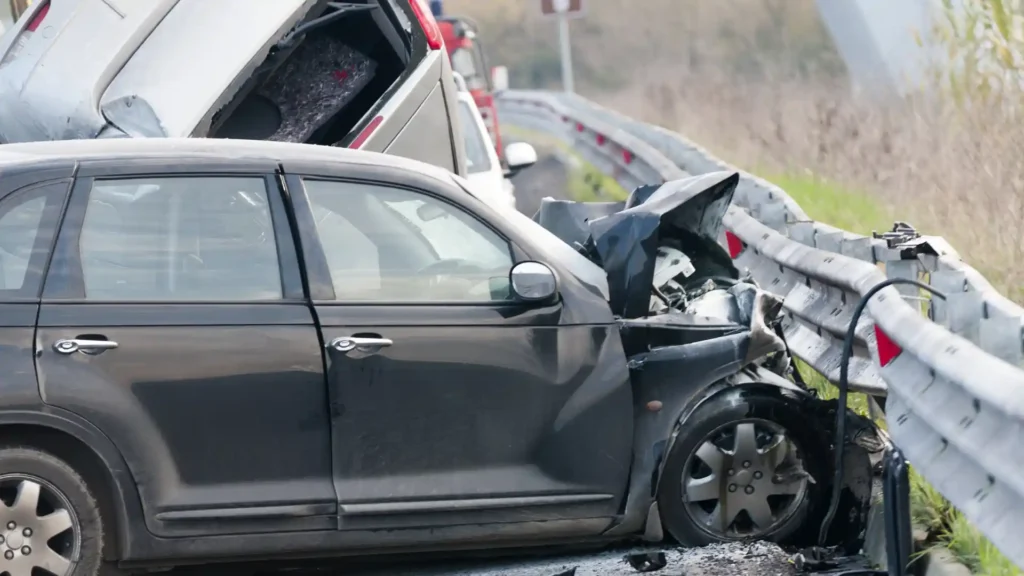 Because fault percentages determine recovery, immediate legal involvement is critical. Many people wonder when to sue for personal injury—the answer is as soon as possible after a serious multi-car crash.
Because fault percentages determine recovery, immediate legal involvement is critical. Many people wonder when to sue for personal injury—the answer is as soon as possible after a serious multi-car crash.
Why Act Quickly:
- Preserve perishable evidence (video, debris, data).
- Prevent insurers from mischaracterizing your statements.
- Ensure medical care and documentation begin right away.
Complex Issues We Handle:
- Multiple insurance policies and coverage layers
- Comparative-fault defense strategies
- Timely filing under South Carolina’s three-year statute of limitations
Multi-car crashes often cause severe, lasting injuries. Our attorneys calculate future medical expenses, lost earning capacity, and pain and suffering to pursue full compensation.
Common injuries in multi-car accidents include traumatic brain injuries, spinal cord injuries, whiplash, and concussions.
Proven Results and Credentials
At Crantford Meehan, we have achieved notable results in complex vehicle-collision cases, including:
- $2.35 million settlement for a family rear-ended by a tractor-trailer on I-26 (Berkeley County).
- $1 million settlement for a passenger injured in a DUI crash (Florence).
- Several six-figure recoveries in multi-vehicle collisions statewide.
View more of our case results.
Our Credentials:
- Graduates of Gerry Spence’s Trial Lawyers College
- William Crantford and Jerry Meehan hold AV Preeminent® ratings from Martindale-Hubbell®
- Deep local experience with Charleston-area roads, traffic, and courts
- Contingency-fee representation—no attorney fees unless we win
Learn more about our attorneys and their qualifications.
Contact Crantford Meehan
If you’ve been involved in a multi-car accident in Charleston, Summerville, Florence, or anywhere in South Carolina, contact us online for a free consultation or call us (843) 832-1120.
Time is critical in preserving evidence and protecting your rights under South Carolina’s comparative-fault system.
Related Posts:


